Everything looked fine on deck- the surveyor had passed over the area just one month previously- but there had been warning signs.
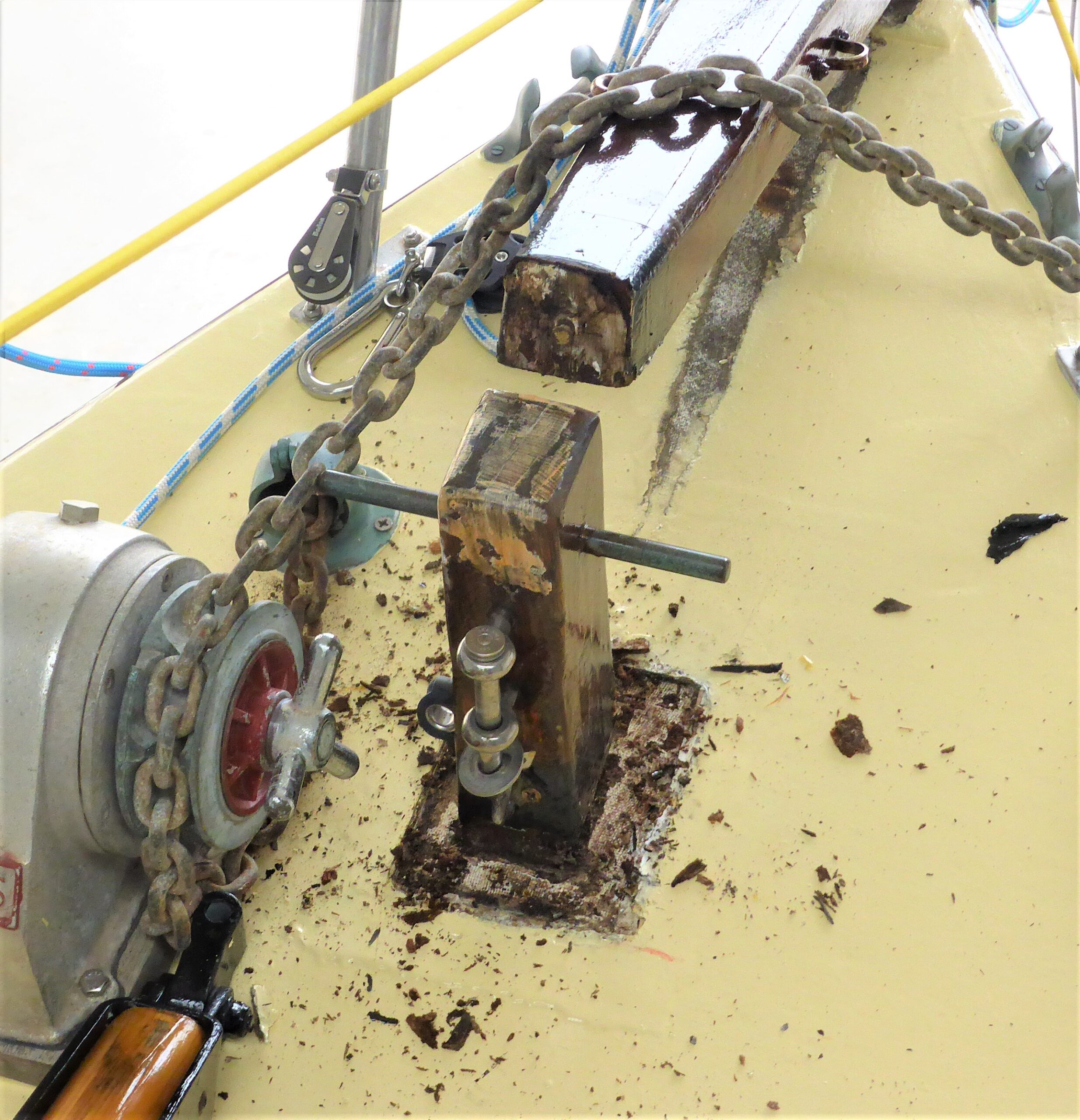
With the rotten beading removed, water damage to the post and nearby deck was apparent. The bowsprit has been moved forward to free the post. Note that the deck under the bowsprit had no paint finish, even though the bowsprit was not in contact with it…
Rainwater had been finding its way down the sampson post in the chain locker, and there had been previous repair(s) to the underside of the deck. The post above deck, and the deck immediately around it with its timber beading, had been coated in epoxy some years back. Now, when I investigated a tiny gap, the beading disintegrated and revealed the erosion of the rotten post. Far from keeping the rain out, the epoxy had prevented the area from drying out.
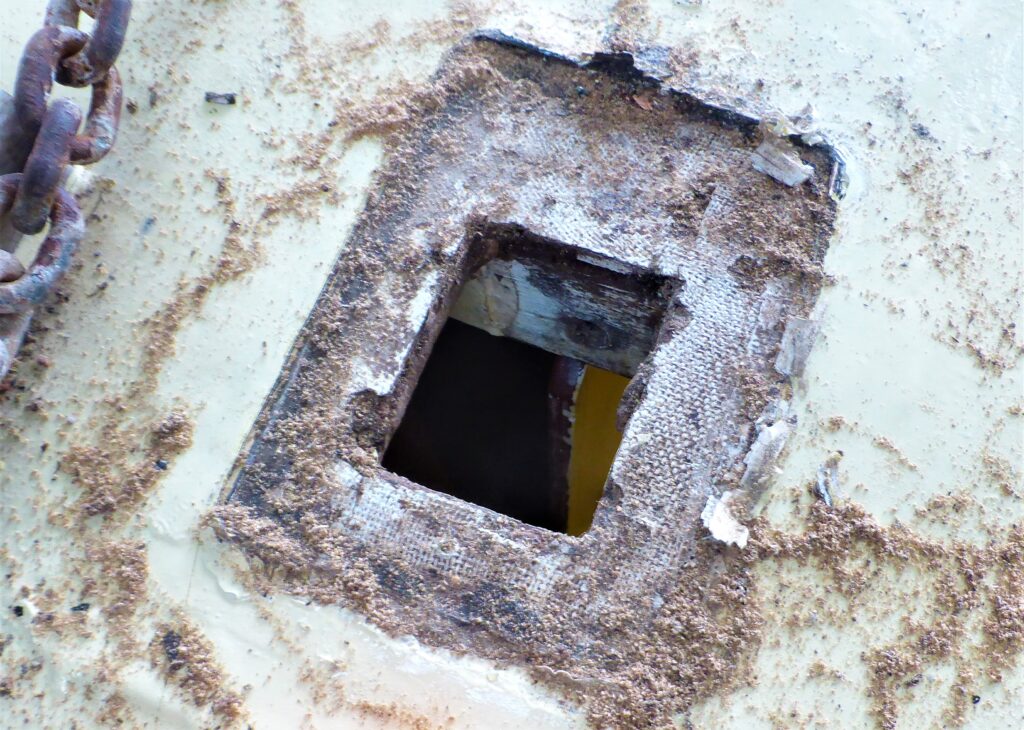
Soggy, weakened deck
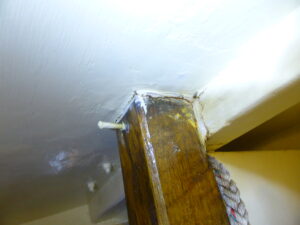
Evidence of earlier internal deck filling
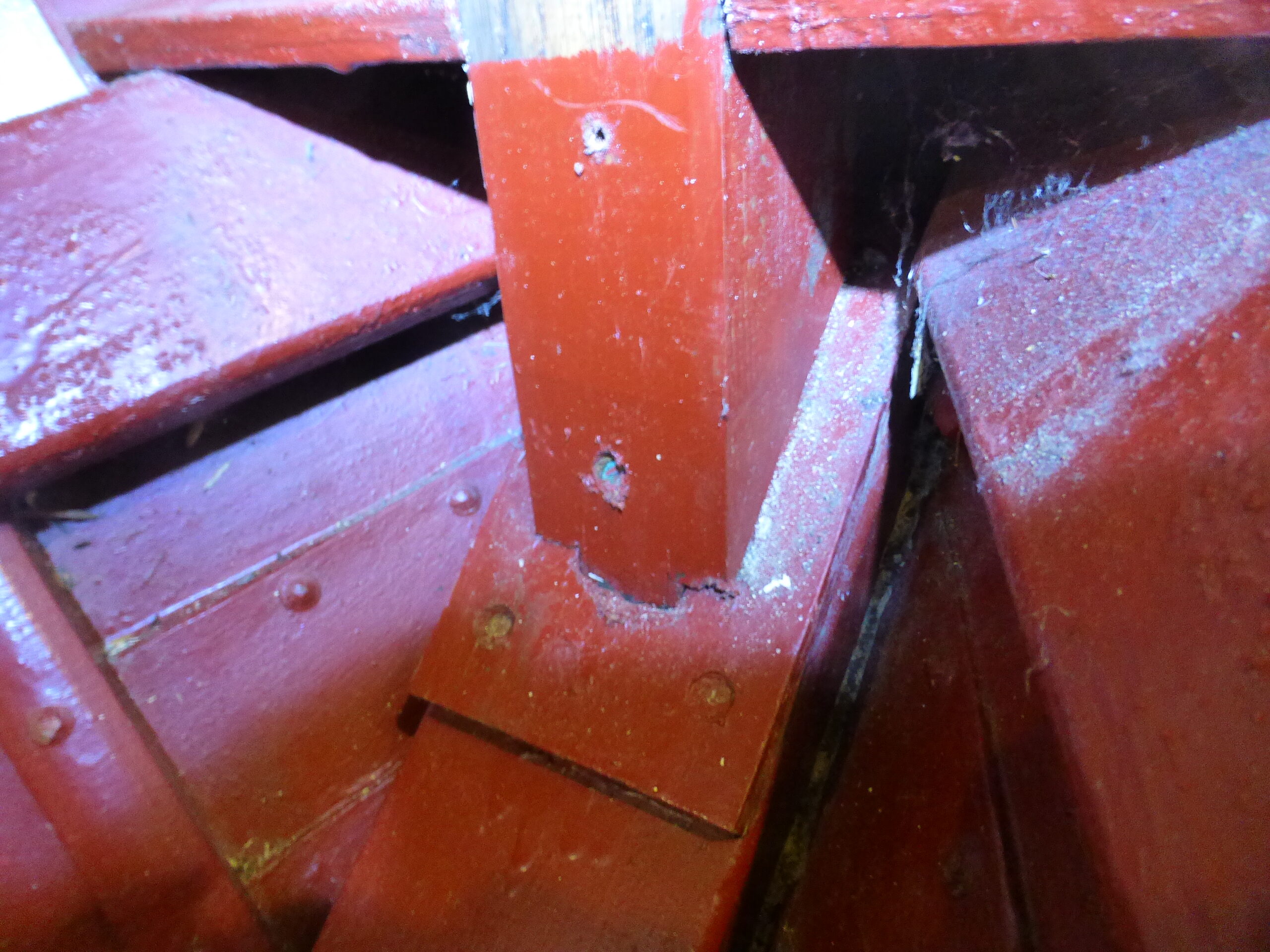
The foot of the post, cut at an angle and with a tenon to fit into a socket on the stem.
After a while, I realised that I had two distinct tasks. The sampson post does not depend on the deck to hold it in position, so I could replace the post as an independent job. The deck, meanwhile, needs to be watertight and strong enough to bear a person’s weight. A local repair, as opposed to a full foredeck replacement, might be possible; a big consideration when you don’t have unlimited access or facilities.
Post removal
The foot of the Finesse sampson post is cut at about 45 degrees, with a tenon that fits into a mortise (in a piece that is screwed to the stem timber). A single woodscrew is angled down at right angles to the foot and into the stem. Where the post reaches the underside of the deck, a single bolt passes through a deck beam to prevent vertical and lateral movement.
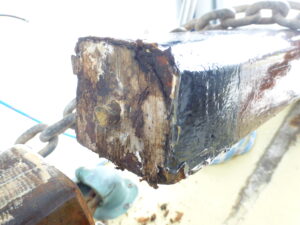
A short 3/8″ rod locates the bowsprit. The corresponding blind hole in the new sampson post can be made with a 9.5mm drill if 3/8″ is unavailable. (This bowsprit was in good condition underneath all the sealant and finishes.)
If a bowsprit is fitted, there will be a method to locate the inboard end into the sampson post, to prevent rotation. In this case, there was a 3/8” bronze (or possibly brass) rod, protruding no more than half an inch into the post. (I increased this to 1” upon reassembly.) The bowsprit needed to be moved forward to remove the post, and that required the removal of the 1/2” bolt passing through the stem head and carrying the chain roller. In addition, a rounded chock, which was fitted with two simple screws, must be removed.
In theory, my post should now have lifted out in one piece. However, there was still some sealant attached to the deck, and the deck was too weak and flexible around the post hole for a good tug. I had to saw the post up into several sections to remove it. (No going back now!)
Renewal
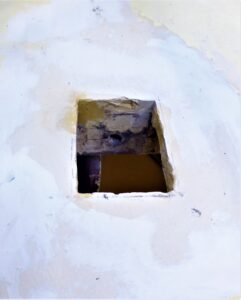
Epoxy wood filler made a smooth surface but hasn’t enough strength on its own.
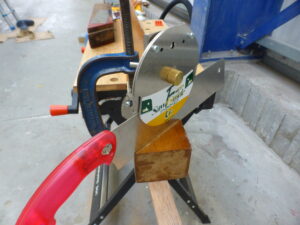
Japanese backsaw and guide, cutting the foot of the new post.
My new post was fashioned from a 1300mm piece of iroko, c/s 60mm x 75mm, supplied by iroko-timber-projects, an eBay trader. All timber cuts were made using a Japanese backsaw from www.woodworkprojects.co.uk, whom I cannot praise highly enough. Their free-angle saw guide is an excellent tool. A 10mm A4 stainless rod was pressed through the top of the post, through a 25/64” hole for a tight fit. A new 150mm M8 stainless bolt secured the sampson post to the deck beam.

Phenolic sheets used to over-plate the deck around the post.
The deck around the post hole was rebuilt with epoxy wood filler, but that was never going to be strong or stable enough. Instead I reinforced the deck both above and below. On the outer surface I fitted a 200mm square piece of phenolic sheet, 4mm thick, with a hole cut for the new post. On top of this, a second piece of phenolic sheet- smaller, and this time 8mm thick- was fitted. These two sheets had rebates around the hole on their facing sides, so a gasket of Sikaflex contained between them was forced into contact with the post.
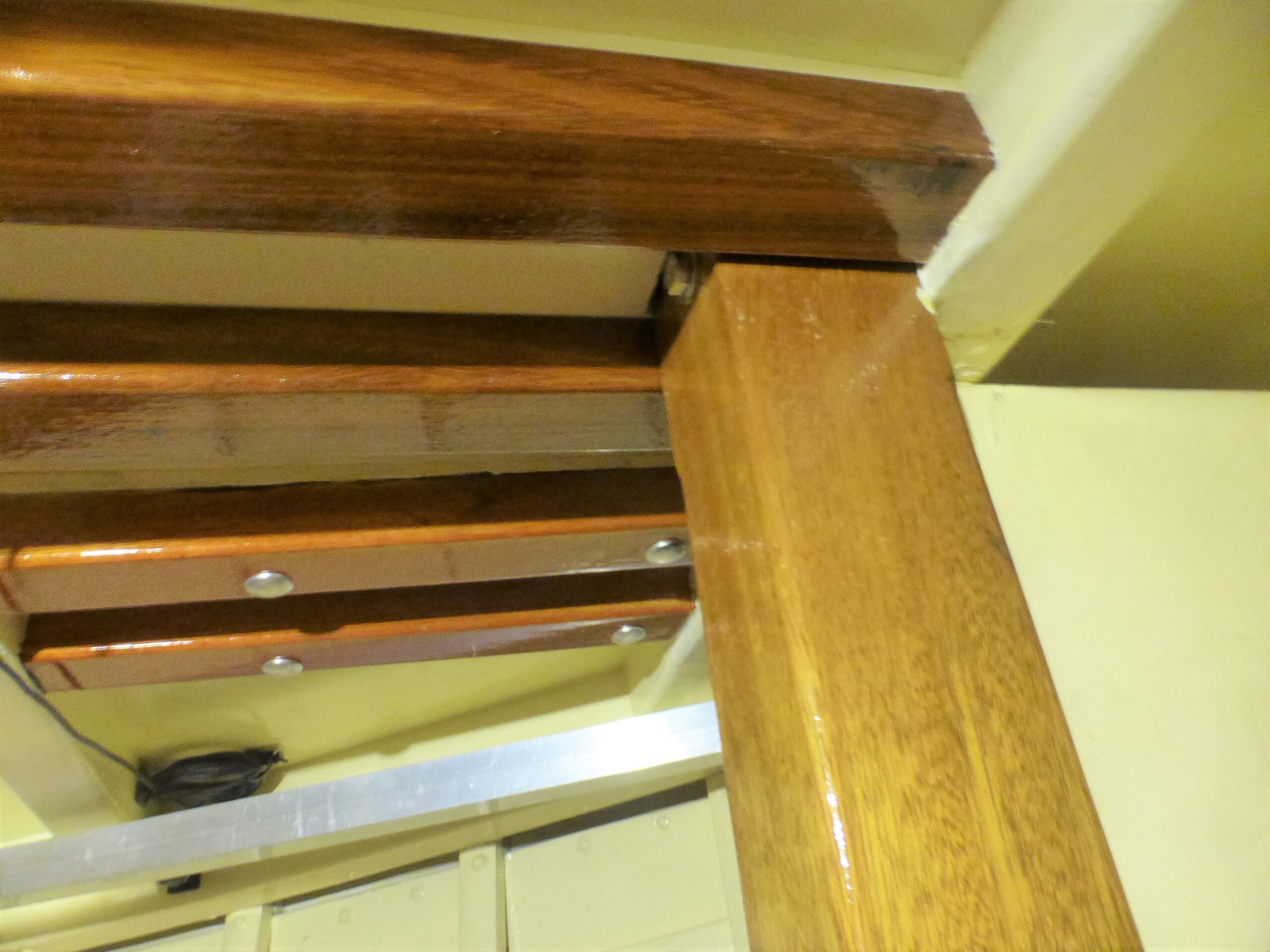
Fore-aft beams brace between adjacent deck beams, holding a 6mm ply reinforcement patch against the underside of the deck and providing a substrate for the phenolic sheet screws. Note that a similar pair of beams were added to stiffen the deck under the anchor winch. The winch was re-secured with 120mm stainless coach bolts.
Both sheets were secured with bronze woodscrews; one pair passed into the deck beam and the other into a new pair of fore-aft iroko beams that reached between the deck beam and the next beam aft. A 6mm ply sheet was also inserted between these beams and the underside of the deck. In addition, the new iroko beams were screwed into their end faces through the deck beams to improve vertical rigidity.
There were some slight changes in geometry- the inner face of the bowsprit needed to be shortened by 4mm- but the excellent saw guide made the removal of this small amount of material straight forward.
Fittings
The foresail boom on this boat pivots on the sampson post- another good reason to make sure that the post is in good condition. The fittings for this are a pair of stainless gate hinges, with a drop nose pin passing vertically through. These can be seen in the photographs.


